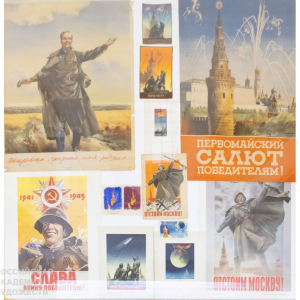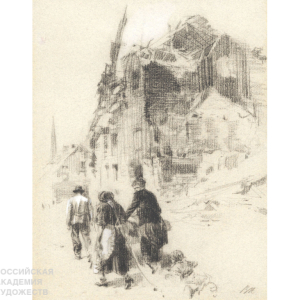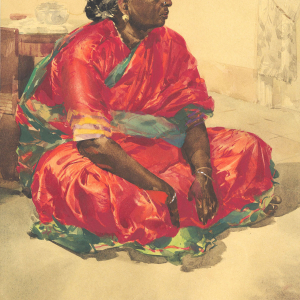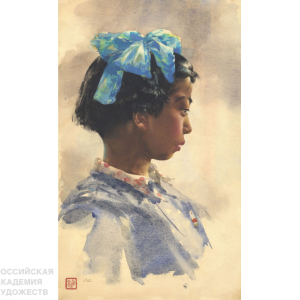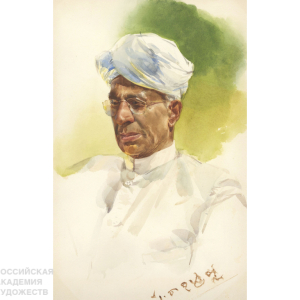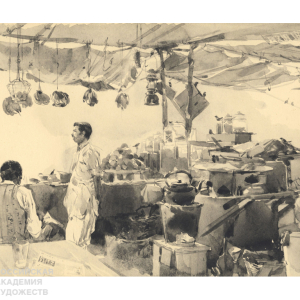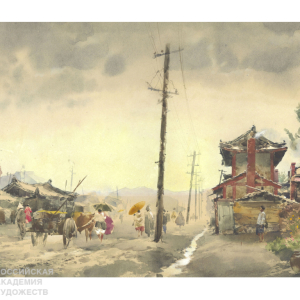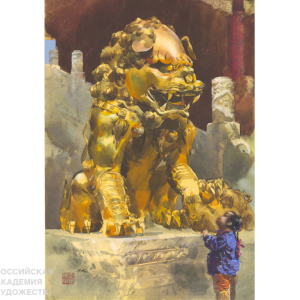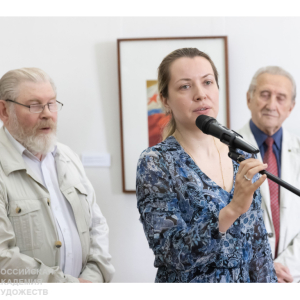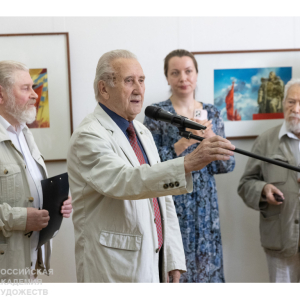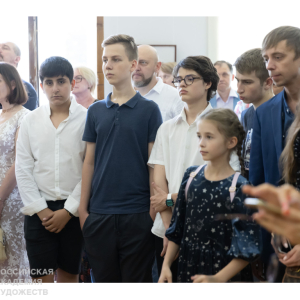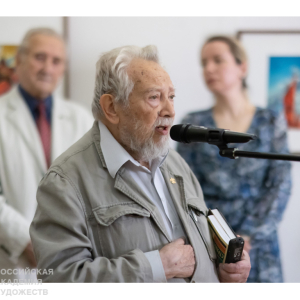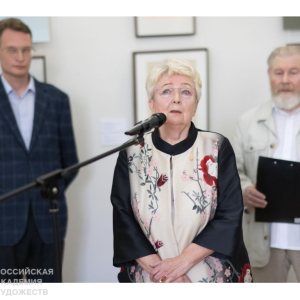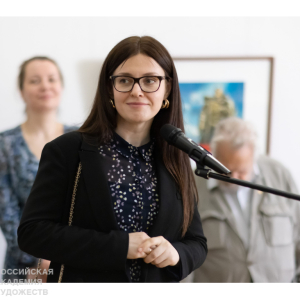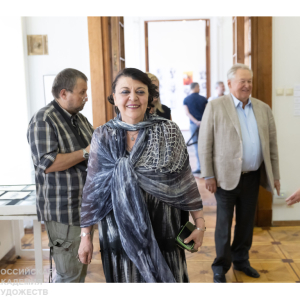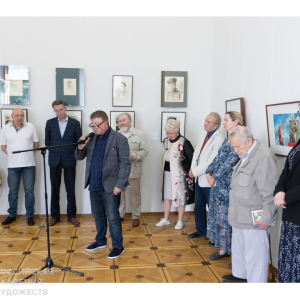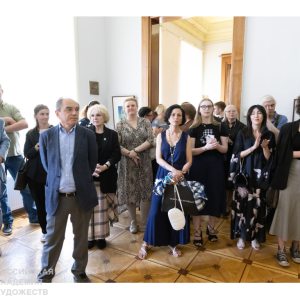THE ARTIST VICTOR KLIMASHIN (1912-1960 ): EXHIBITION AT THE RUSSIAN ACADEMY OF ARTS
Dates: June 23 – July 16, 2023
Venue: Exhibition halls of the Russian Academy of Arts (21 Prechistenka street, Moscow)
The Russian Academy of Arts presents an exhibition of works by the master of the magazine illustration, poster, easel watercolor and drawing Victor Klimashin (1912-1960) fr om the collection of Victoria and Michael Tsantekidi.
The vast exposition in nine exhibition halls of the Academy features Klimashin’s graphic sheets of various years, things fr om his personal archive, photographs. It focuses on the heyday of Victor S. Klimashin’s work happened in the 1930s-1950s, but the “turning points of the epochs”, the change of rulers, the change in stylistic guidelines in the country, as well the early death of the artist have become the reasons for the undeserved oblivion of his creative work and distinguished creative destiny in subsequent decades. This retrospective exhibition is a unique opportunity to have an idea of the artist’s versatile talent and the scale of his milt-sided activity.
A graduate of the Saratov Art College, for his short creative career Klimashin has shown his brilliant talent in several types of creativity and reached undeniable heights in each of them.
Each new decade has brought to the art of Victor Klimashin its new historical spirit and dynamics and realizing them he managed to find himself on the crest of those creative waves that penetrated into the young Soviet state.
The 1930s were the rise of the Soviet cinema, which produced legendary directors, actors, new heroes, new genres… The genre of cinema poster also flourished. In those years Victor Klimashin worked for the poster workshop together with the Stenberg brothers, Nickolai N. Zhukov - his partner for many years. He created posters for such films as “The Invisible”, “By the Blue Sea”, “the Immortal Garrison”, “The Hot Days”, “The Thought of the Cossack Galuta”, “Peasants”, “The Thunderstorm”, “Three Comrades” , “The Youth”, “The Ghost that Does Not Come Back”, “Do I love you?”.
Also in the 1930s, Klimashin executed a lot of advertising drawings for the “Ogonyok” magazine – advertising ZIS cars for “Technoexport”; “Red Moscow” perfume; Soviet medicines; advertising for the subscription of the “Pravda” publishing house; subscription to children’s magazines and others.
In 1935, he became a winner of the “Intourist” competition for the best advertising poster held in London.
In the same period his active collaboration with the periodicals “Smena”, “Around the World”, “Red Warrier”, “Ogonyok”, as well as with the publishing house “Young Guard” began.
In 1940, Victor Klimashin became the Chief Artist for the “Ogonyok” magazine, for which he authored many covers and some of them became classics.
In the first years of the Great Patriotic War Victor Klimashin was involved in combat actions in the Smolensk region as artilleryman. He was awarded the medal “For the Defense of Moscow”.
In 1943, at the invitation of Nickolai Zhukov he started working for M. Grekov Studio of Military Artists. For the next two years, according to the instructions of the Political Department together with Nickolai Zhukov he travelled to different sections of the front, including in a partisan detachment, and executed a series of drawings about the war there. Between the trips to the front he worked at the propaganda posters “Glory to the Soviet Artillerymen”, “We Won the Battles, We Will Win in Labor”, etc.
In May, 1945 with his colleagues from M. Grekov Studio Klimashin worked in the streets of defeated Germany creating a series of sketches dedicated to victorious soldiers, to the consequences of the war… In that series he masterfully conveyed both the monumental scale of the destruction of German cities and the fragments of the catastrophe - killed soldiers, shot, broken monuments, abandoned things, destroyed lives…
But, it was during those tragic years, that another outstanding talent of Victor Klimashin revealed itself – the talent of the writer. However, few people knew about this in those years – after all, he wrote … diaries. And we will know about them only a few decades after his death. In his almost daily records the Epoch, the features of the time, patriotism, humanity, sincerity, humor, deep analysis of what was happening, and of course, the power of the image of those events and places wh ere his life took him have been intertwined in the most organic way.
Much has been written about the strength and power of the Artists forged by the Great Patriotic War and Victor Klimashin is no exception. His considerable experience in the field of film posters, advertising and work in magazines has been transformed in him by the War into a large form and psychologism. A human has become a focus of his creative work. The “masks” on the faces of his movie heroes and advertising posters were forever replaced by reflections, history, character and will.
The postwar 1950s have brought Victor Klimashin completely new creative tasks and impulses: they were a synthesis of all his talents.
In 1951, he was invited to the position of the Chief Artist of the Soviet Pavilion at the International Industrial Exhibition in India which opened in Bombay in March, 1952. Despite the most difficult construction conditions, described in his diaries, that trip gave him the most powerful creative impetus. The incredible country, hospitable people, amazing meetings – all this allowed Victor Klimashin’s own work to manifest itself to the fullest. For several decades of his stay in India he created a large series of watercolor portraits of both ordinary people – coolies, hard workers, peasants, and progressive public figures of India – Radhakrishnan Sarvepalli, Indira Gandhi, Harindranath Chattopadhaya, Ray Bakkai, Prithviraj Kapoor, M.F Hussain and others; as well as a series of landscapes and a lot of sketches.
In 1954, Klimashin was once more invited to become the Chief Artist of the Soviet Pavilion - now in China. And again, vivid impressions of the meetings inspired him to create a series of watercolor portraits – Mao Zedong, Qi Baishi, the translator Wi Xin Yun and many ordinary people in China. During that trip another talent of Klimashin was clearly visible – his talent as a diplomat. For several months he easily and naturally communicated with the top leader of the PRC – Zhou Enlai; established contacts with the Academy of Arts of China by visiting studios of the country’s leading artists and the First Chairman of the Artists’ Union of China Qi Baishi, the family of the recently deceased, outstanding artist Xu Beihong.
In 1956, Victor Klimashin, as part of the delegation of the Soviet cultural figures visited the North Korea, which celebrated its 11th anniversary in those days. And in this country he painted an impressive series of portraits of ordinary Koreans, figures of culture – the actress Soi Seung-hee, notable weaver Ko Yong Suk, etc.; a series of landscapes – “The Diamond Mountains. The Peaks of Manmulsan”, “Old Pyongyang. It Is Drizzling”.
In 1957, Klimashin’s another working trip to India took place with the artists Dmitry A. Nalbandyan and Abdulkhak A. Abdullayev, during which they made their famous portraits of Indira Gandhi.
The sincere, enthusiastic, loving view of Victor Klimashin – the artist and writer – of the people of India, China, Korea could not leave indifferent the millions of Soviet visitors of his solo exhibitions in Moscow, Leningrad, Saratov, Tartu, and many other cities of the Soviet Union. Postcards with works of Victor Klimashin made in the above countries scattered in huge circulations… In each new decade, Klimashin shared with his country not only the glory and success, but also all the troubles and hardships working at the lim it of his forces as an artist, warrior, writer, diplomat during the day, at night, in the unbearable climate of the Asian countries…
Victor Klimashin passed away at the age of 48 not having time to become the People’s Artist or an Academician; the changes of creative courses in the culture of his native country have securely “archived” the heritage of the 1930s – 1950s in the far corners of repositories, but even today his colleagues – descendants pay great tribute and have deep respect for his creative legacy.
print version
